
Cover Page created by me, @msquaretk |created with Canva app
It's already week 8 of the season 4 in the Steemit Crypto Academy. The past seven weeks were wonderful, full of experience and lessons. I will be participating fully in this week 8, just as usual.
This post is written in response to Professor @reddileep's homework after his lecture on "How to Trade Cryptocurrencies Profitably Using TD Sequential". He explained the indicator very well by showing us how to use to be profitable in the market. So, in the next paragraphs, I will be responding to his questions one after the other. Follow me closely.

Question 1
Define TD Sequential Indicator in your own words.
TD Sequential indicator is a technical indicator developed by a technical Analyst called Tom Demark. It's a trend based indicator. It identifies or shows the trend reversal and exhaustion. In essence, TD Sequential indicator shows the turning point of the price of an asset.
Sequential indicator comprises of the numbers that shows below the candle in a downtrend and above the candles in an uptrend and the numbers will count from 1 to 9 for setup phase and to 13 for countdown phase.
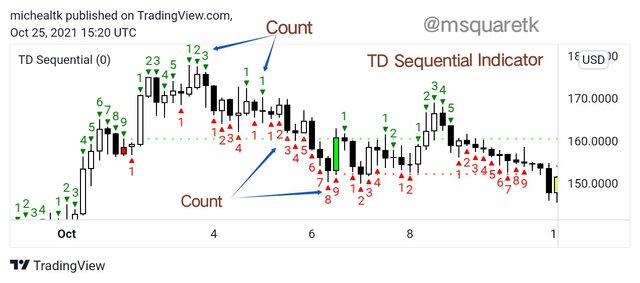
Fig. 1: TD Sequential Indicator
Image Source
The indicator has two major phases, the setup phase and the countdown phase. The setup phase occurs after a price flip and there would be count of 9 above the candle in an uptrend and below the candle in a downtrend. The end of 9 count is usually a trading signal for traders (More on this later). The countdown phase is a phase that depends on the setup phase. It's valid only when the setup has occurred and comprises of 13 count.
Set up phase is a common phase used in this indicator, so we are encouraged to focus more on set up phase. Now the setup phase, there is a buy setup and there's a sell set up. We know that to sell, price ought to be at a premium price, a price when the asset is overbought, and to buy, price must be at discount price, low price. This indicator is used for both but and sell setup. I will explain this further in the next sub topics.

Question 2
Explain the Psychology behind TD Sequential. (Screenshots required)
The goal of any trader before before using any Indicator is to know how it's function and to properly learn how to add it to the tools he knows how to use to be profitable in cryptocurrency market. Now, for TD sequential indicator, it has about two major phases:
- setup phase and
- countdown phase.
Although, it's said that the indicator has more phases which traders use, but the most two common phases are setup and countdown phases. For this indicator, Japanese candlestick or bar chart is considered effective because of the considerations of the behavior of the candle that the indicator makes use of.
TD sequential indicator works by identifying the exhaustion in market trend or reversal of price. For set up phase, there's buy set up and sell setup. For the sell setup to occur, the price must go upward and for the buy set up to occur, the price must go downward, knowing that the real sell that gives profit is at a premium price, high price and buy that gives profit is at a discount price, low price.
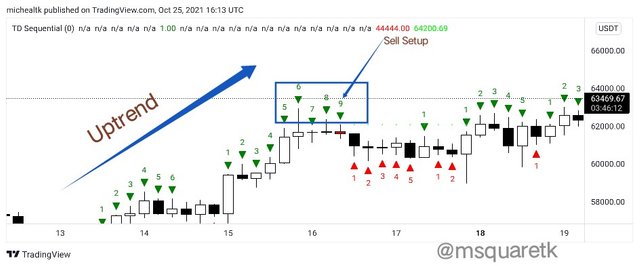
Fig. 3: Uptrend Illustration
Image Source
The count show above the candle in an up trend, and if the count is valid, the price should rally down. We will discuss how to read the count in the next question very well.
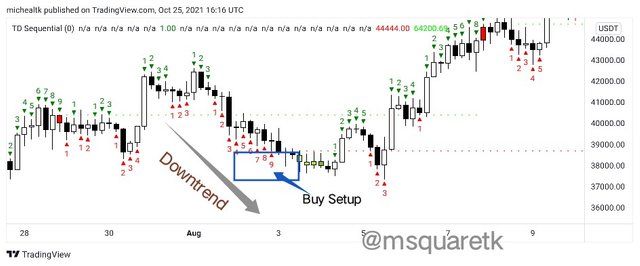
Fig. 3: TD Sequential Indicator in an Downtrend
Image Source
We can see from the chart that the count are below the price or candle in a downtrend market. If the count is valid, as soon as the count 9 is formed, the price should rally above.

Question 3
Explain the TD Setup during a bullish and a bearish market. (Screenshots required)
In this part of the question, I will be explaining TD set up during a bullish and a bearish market. Let's start with set-up during a bullish market.
Bearish Stepup
The TD sequential indicator is used to analyze and position oneself for short in the market. For a bearish set-up, there are criteria that must be met before we can say that the set up is valid. The first thing is that, the indicator must be added to the chart.
Then, after adding the indicator, for a bearish set up, we are going to sell when the price of the market is high. Then, before this, market must be in a downtrend and as soon as a price flip, that's a change in direction occurs when the price changes from downtrend to uptrend, that's when the count for the bearish set up should begin.
Now, after the market has gone down significantly and a bullish candle begin to form, then we start counting. The number 1 candle (that's a candle that carries TD number 1) must have a close above the previous fourth candle, that's the candle that formed four period ago. That's rule is very important because it is the starting point for the set up.
Then, once that satisfies the condition, then the TD number 2 candle must also have a close above the close of four period candle, that is the previous fourth candle. And this must satisfy for TD number 3 to 9. See the screenshot below.
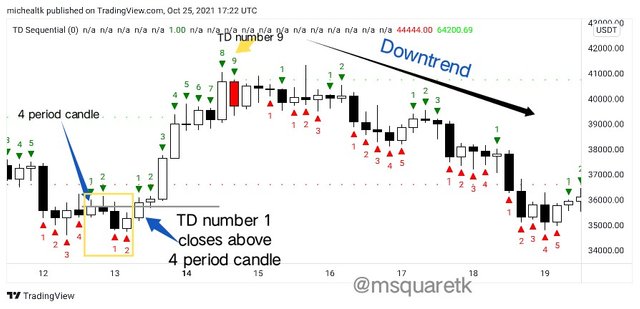
Fig. 4: Bearish Set Up
Image Source
Bullish setup
Bullish setup is a direct opposite of the bearish set-up. For bullish setup, we simply want to buy the the asset when the price is low. So, for bullish setup, price must go downward.
In order to set up the indicator for a buy order, the there's must be a flip in price. That's after the price of an asset has been in an uptrend for a certain period of time, then a change in the direction of price must occur, turning the price to downward direction. Thanks, as soon as the price flip occurs, we start counting and see if the count is valid.
The first to note after the flip in price is the TD number 1. This number is significant to the count. TD number one must have a close below the four period candle, that is it must close below the previous fourth candle.
Then, after that satisfies the condition, TD number two must also have a close below the four period candle. The same goes for TD number 3 to number 9.
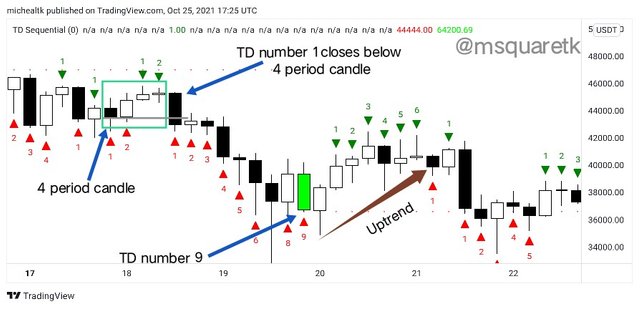
Fig. 5: Bullish Setup
Image Source

Question 4
Graphically explain how to identify a trend reversal using TD Sequential Indicator in a chart. (Screenshots required)
In this part of the question, I am going to be explaining how to identify trend reversal using TD sequential indicator. I will be using chart to explain it and therefore, tradingview is going to be the platform I will be using.
In an uptrend market, which signifies that the price of the market is going up, it will come to point when the price will be over bought and the sellers will take over the market. At this point, TD sequential indicator will give the signal for reversal. Let's see the screenshot below before I explain further.
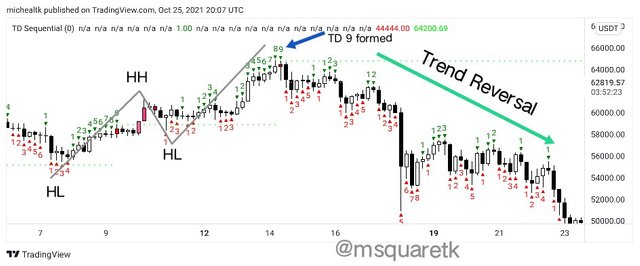
Fig. 6: Trend Reversal
Image Source
As it is seen in the screenshot above, the market was in an up trend with a series of higher highs and higher lows. The buyers keep dragging the price of the asset up by opening more position, accumulating the asset. But, it get to a point where they were exhausted. At this point, TD sequential indicator show that the TD count 9 has formed and the price rally downward. And of course, we know that the rules of the count says that each count from TD number 1 must have a close above the period for candle, the previous fourth candle, which it was satisfied.
Also, let's the reversal to the upside in a bearish market.
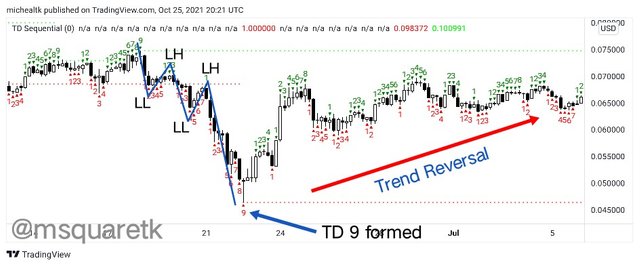
Fig. 7: Trend Reversal to the upside
Image Source
In a bearish market, the price is going downward. As it is seen in the screenshot above, there's series of lower highs and lower lows to the downside which signifies that the bears are in control of the market. And as the rules fo a buy setup, for a reversal or change of trend to occur with TD sequential indicator, the TD number 1 must close price must be lower than the previous fourth candle or four period candle; and the TD candle 2 to 9 must follow the same rule. As soon as TD 9 formed, if the rule is valid and all criteria are met there should be reversal to the upside.
As you can see, the criteria are met. As soon as TD 9 formed on that chart, the price of the asset rallied up, the reversal of the trend occurred to the upside.

Question 5
Using the knowledge gained from previous lessons, do a better Technical Analysis combining TD Sequential Indicator and make a real purchase of a coin at a point in which TD 9 or 8 count occurs. Then sell it before the next resistance line. (You should demonstrate all the relevant details including entry point, exit point, resistance lines, support lines or any other trading pattern such as Double bottom, Falling wedge and Inverse Head and Shoulders patterns.)
In this part of the question, I am going to be using the knowledge of the TD sequential indicator and the previous knowledge of trading i have acquired in this academy to perform or make a real purchase of BTC. I am going to use my USDT asset to buy it.
Now, I'm going to be using tradingview platform for the analysis and binance exchange platform for the purchase. Then, checking the chart of BTCUSDT, I found out that the TD number 9 is currently forming at a very key support level. And of course we know that, when we want to make a purchase or a buy order with the indicator, the matket must be at low price. Then, the TD number 8 or 9 must form before entering the market. Also, the count must follow the rule. The number 1 TD must have closing price lower than the four period candle or previous 4th candle and TD number 2 to 9 must follow the same rule.
Let's see the chart below.
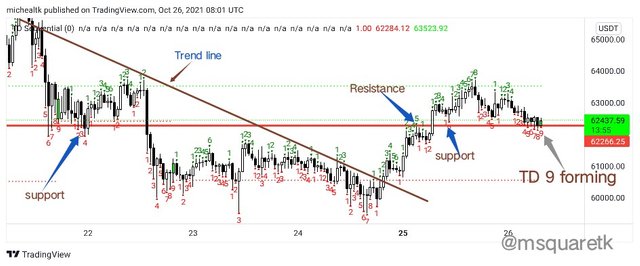
Fig. 8: BTCUSDT Chart
Image Source
As it is seen in the screenshot above, TD number 9 is currently forming, which is a signal that the trend may reverse to the upside. Now, to have confluence, let's me combine one or more tools with TD sequential Indicator.
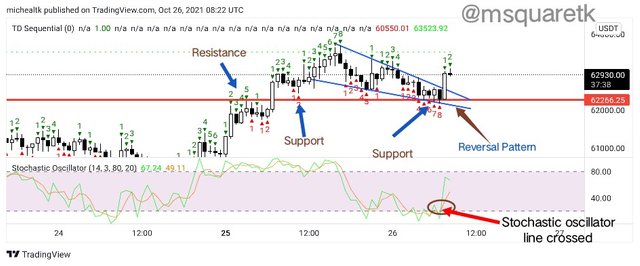
Fig. 9: BTCUSDT Chart with other tools
Image Source
I have added Stochastic oscillator to the chart and Drew support and identified a reversal pattern.
Looking at the indicator window, the stochastic oscillator, we can see that it has entered oversold region (oversold region is 20 and below) and immediately this occurred, the two lines of stochastic crossed and move up. This is a buy signal from the stochastic oscillator.
Also, we can see that, the area where TD 9 is forming is a key level. That place is a support/resistance level as there are have been multiple rejections from the level in the past. Now, that level is acting as a support level for the reversal that is about to happen.
In addition, see a reversal pattern that occurred. The bearish trend that comes from above forms what is called chart pattern. That pattern signifies trend exhaustion, as a shift in the trend may occur. With all these information, I now have more reasons (confluence) to purchase BTC.
So, the TD number 9 that's forming turned back to TD number 1. Sometimes, it forms like that. So, after the formation of TD 9 that turned to TD 1, I made a purchase. The stop loss was placed below the TD number 1 and take profit was placed at a nearest resistance level.
See the screenshot below
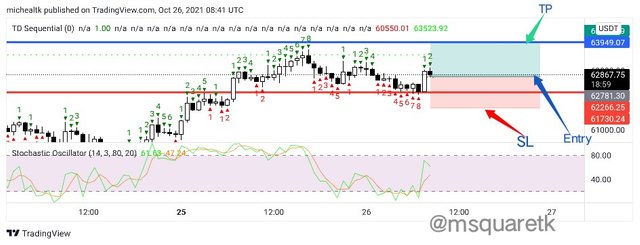
Fig. 10: Stop loss, entry and take profit on BTCUSDT Chart
Image Source
Now, let's see how the purchase went on binance platform. I am buying at the market price because I want my order to get filled immediately. I have about 22.9USDT which I want to use half of the fund to purchase BTC. You can see that in the screenshot below, i have entered the half of the amount to buy BTC. Then, I am buying at the market price of 62995.59.

Fig. 11: Buying BTC with USDT | binance exchange platform
The order details of the purchase is in the screenshot below.
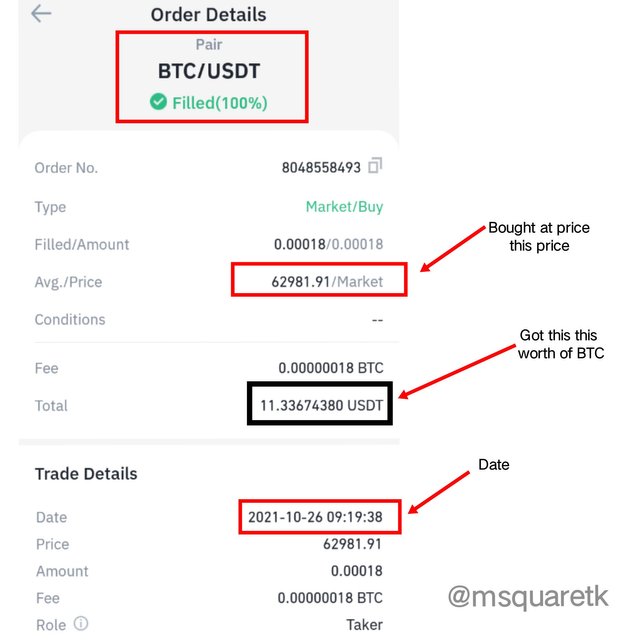
Fig. 12: Order details of the purchase | binance exchange platform
Now, after some hours, the trade went up and moved to a resistance level. Then, I went to sell BTC for USDT. I'm selling at at the market price of 63051.4. We can see that the price has increased than where I bought it. See the screenshot below.
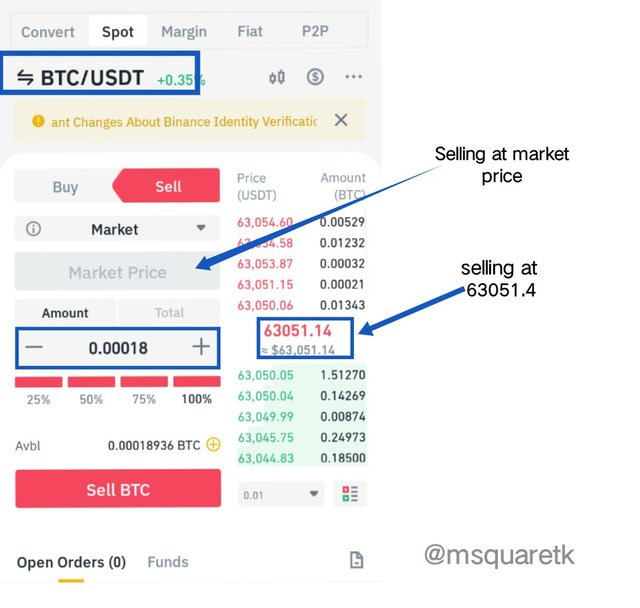
Fig. 13: Selling BTC for USDT | binance exchange platform
Also, the order details of the sell order is shown in the screenshot below. We can see the details such as the price I sold, the time and date and the amount I got in USDT. The amount i got has increased. I got 11.34558USDT. This is as a result of the rise in the price of the asset. It should have been more than that, if not because of the fee deducted.
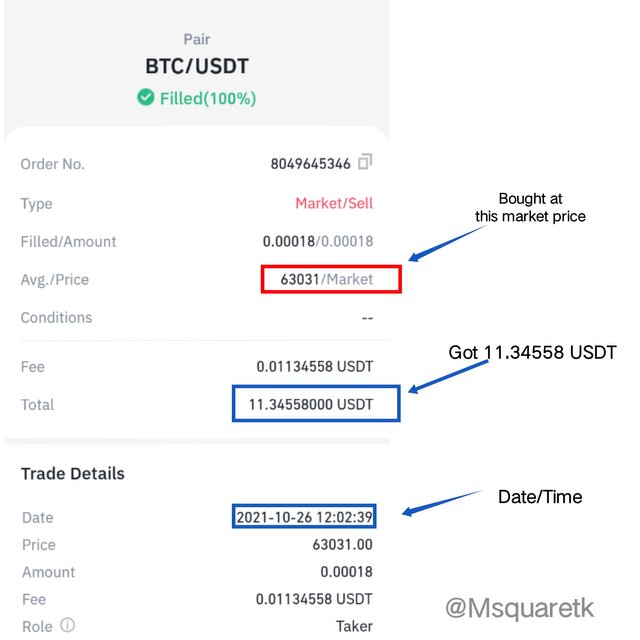
Fig. 14: Sell Order details of BTC/USDT | binance exchange platform
I went to further to use a demo account when I was performing the spot trading of the real purchase. I used Mt4 platform to trade a buy order with the analysis I have.
Second Test: Using a Demo Account to Trade the setup in addition with the real purchase on binance.
Since I have the setup at hand which I have carefully analysed in trading view pltaform. As Soon as I have confluence for the setup, I entered an instant execution of buy order on mt4 platform. The stop loss was placed at a level I placed it on training view, below the TD number 1 candle, and take profit was placed at a nearest resistance level. See the screenshot below
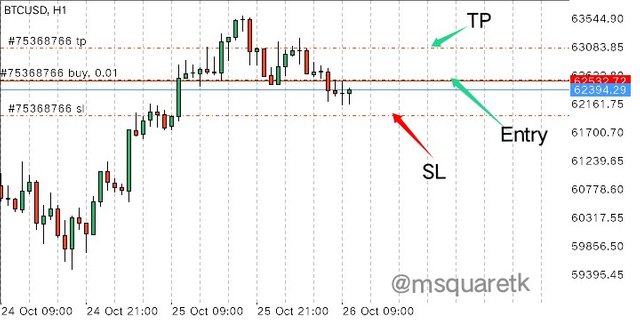
Fig. 15: Buying of the asset on Mt4 platform | Mt4 Platform
Then, few hours after, the price rallied up and take profit was hit. See the result of the trade in the screenshot below.

Fig. 16: Trade Result | Mt4 Platform

Conclusion
Technical indicators are one of the tools used in technical analysis. Most of the indicators give trading signals, when to enter and exit the market. **TD sequential indicator I an indicator develop by a famous technical Analyst called Tom Demark, hence the is named after him. This indicator determines the trend exhaustion and price reversal in the market.
I have studied this indicator and used this to take trade based on what I have been taught as well as the previous knowledge I have gained. Thanks to Professor @reddileep for bringing this course up. I have learnt one or two things. I look forward to seeing you next lecture.

CC: @reddileep
Written by @msquaretk
Invest/Delegate your Steem Power and be assure of your daily income. Click here for more details.
Join our Discord Server & Community for more details
Downvoting a post can decrease pending rewards and make it less visible. Common reasons:
Submit